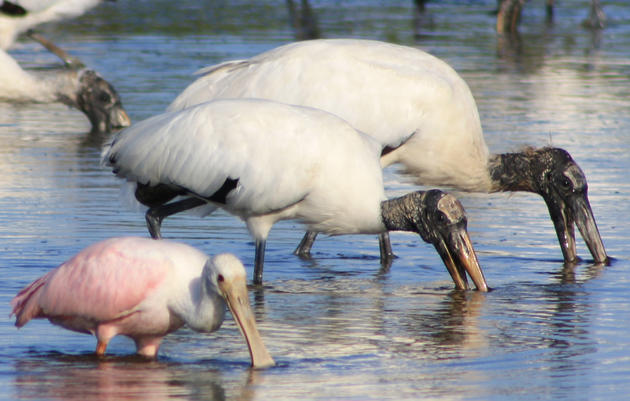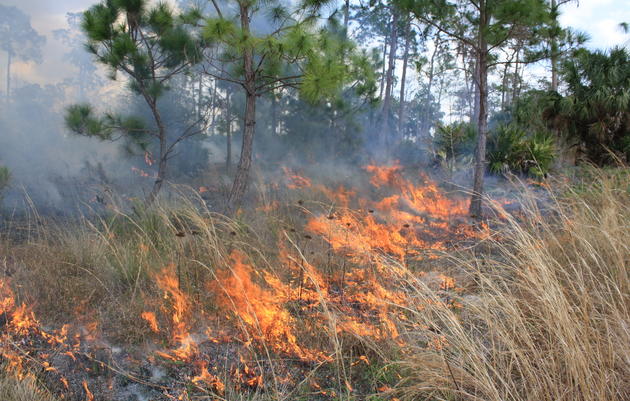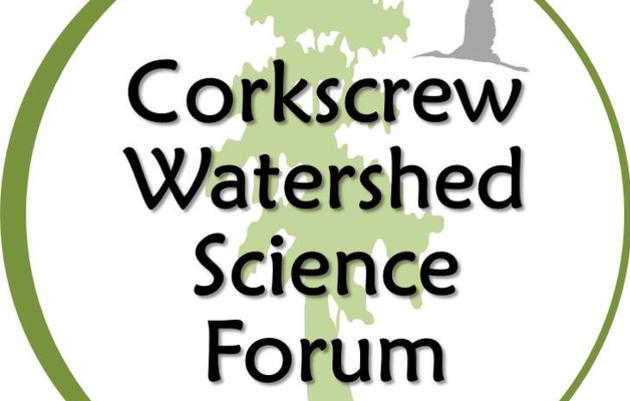Wetland Restoration
One of the primary goals of Western Everglades Research Center is to improve the science behind wetland restoration in order to maximize benefits for the ecosystem. From large-scale projects that are components of the Comprehensive Everglades Restoration Plan (CERP) to smaller-scale restoration projects on county and privately-owned parcels of land, our staff scientists have been enilsted to consult and advise on projects to help maximize foraging benefits for Wood Storks and other wading birds.
County, State and Federal restoration projects return lost wetland acres back to the wildlife by adding acres of habitat to the ecosystem. This is additive restoration--restoration at its best.
Currently being used on restoration projects both within and outside the Sanctuary, including the Panther Island Mitigation Bank, our research team has developed wetland monitoring programs for hydrology, vegetation, aquatic prey (fish and aquatic macroinvertebrates), wading birds, songbirds, and mammals. Collecting data before, during and after restoration allows us to quantitatively demonstrate restoration success. Using these data to better understand ecosystem response to restoration will help us to fine-tune the restoration process and maximize return on our effort.
Restoration Priority: Wood Storks and Panthers
Corkscrew is an important piece of the Western Everglades' ecological puzzle, the mosaic of natural habitats that support a rich diversity of wildlife. We are known for hosting the largest Wood Stork colony in the nation. Several Florida panthers also call Corkscrew home. Both these species are endangered due to habitat loss and fragmentation, both have vast home ranges far exceeding the ability of our 13,000-acre sanctuary to ensure their survival. Without habitat restoration, the recovery of Wood Storks and panthers would be impossible. Both these species are also considered umbrella species, so protecting them protects a suite of other species that use the same habitats and resources.
Restoration Priority: Short-hydroperiod Wetlands
Audubon Florida's science staff have focused on short-hydroperiod wetlands (shallow wetlands inundated less than 6 months of the year) as an essential habitat for Wood Storks foraging early in the nesting season. Because they are relatively easy and inexpensive to drain or fill, short-hydroperiod wetands have historically been lost in much greater proportion than other wetlands. Our analyses suggest that over 80% of short-hydroperiod wetlands within the core foraging area of the Corkscrew Wood Stork colony have been lost due to changes in land use. Shallow wetlands are also vulnerable to degradation caused by non-native invasive plants which tend to flourish at the margins of the disturbed landscape due to rapidly fluctuating water levels.
Audubon Florida recognizes the importance of protecting and restoring these wetlands whenever and wherever possible.
Related
Panther Island
Panther Island is an active habitat restoration project located along the northern and western boundaries of Corkscrew Swamp Sanctuary.
Habitat Stewardship
Five principle components: fire, invasive species, hydrology, wildlife & plants, and human access.
Corkscrew Watershed Science Forum
Partnering with our Federal, State, County and other neighbors to share the latest science on the ecology of our watershed.
How you can help, right now
Donate to Protect Corkscrew's Birds and Wetlands
Make a meaningful and lasting gift to protect Corkscrew Swamp Sanctuary's rare Everglades habitat.
Become a Member
Join an extraordinary and growing community of members dedicated to supporting the conservation of natural ecosystems throughout the Western Everglades.
Sign Up for the Corkscrew eNewsletter
Stay connected to Corkscrew Swamp. Sign up for our monthly online newsletter.






